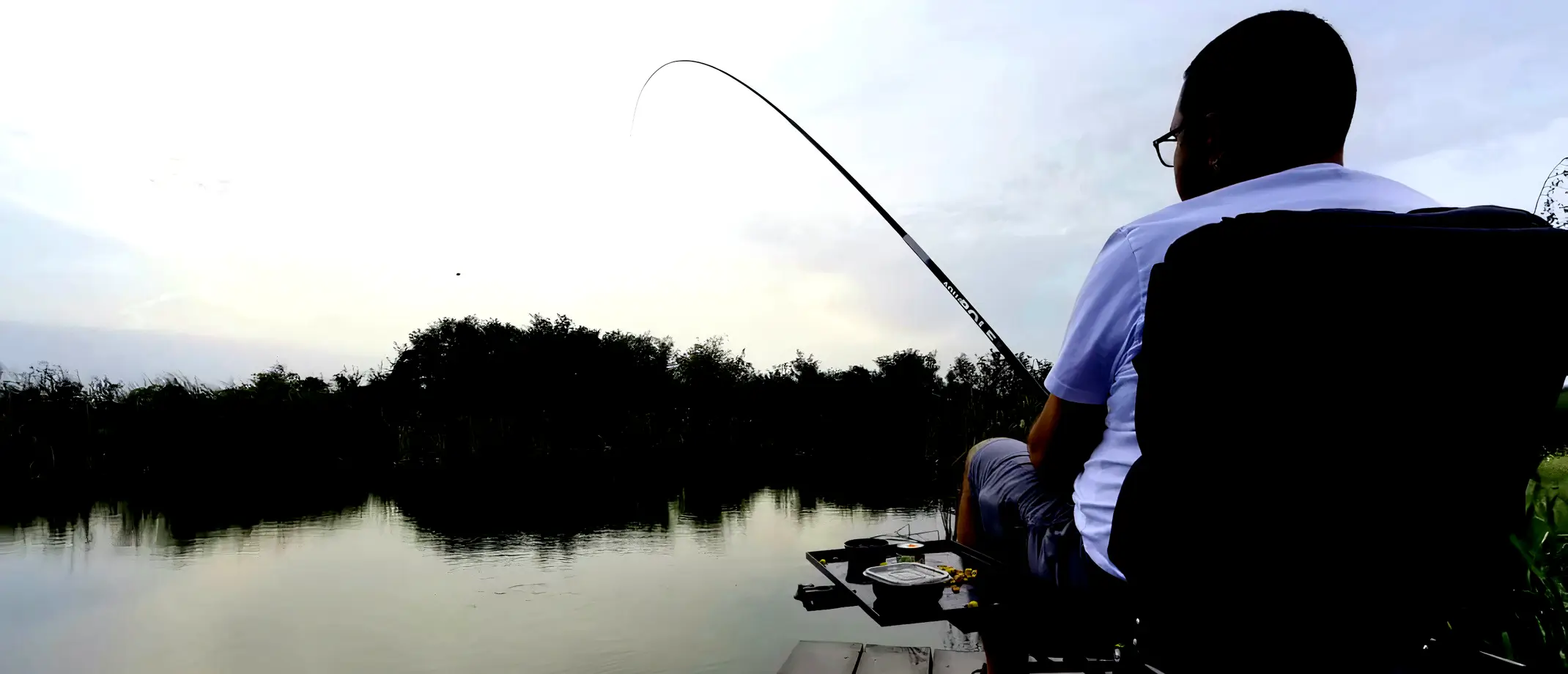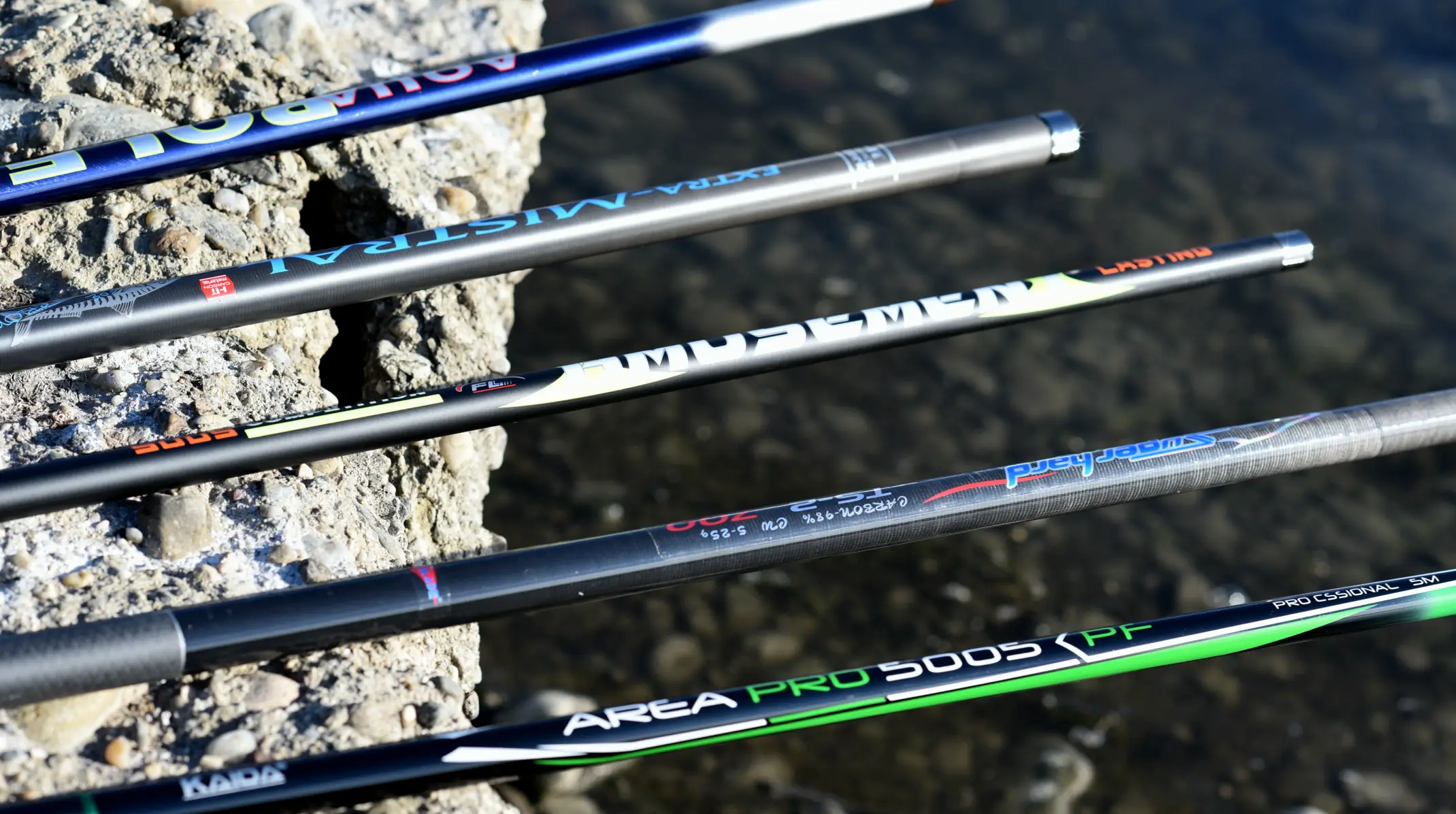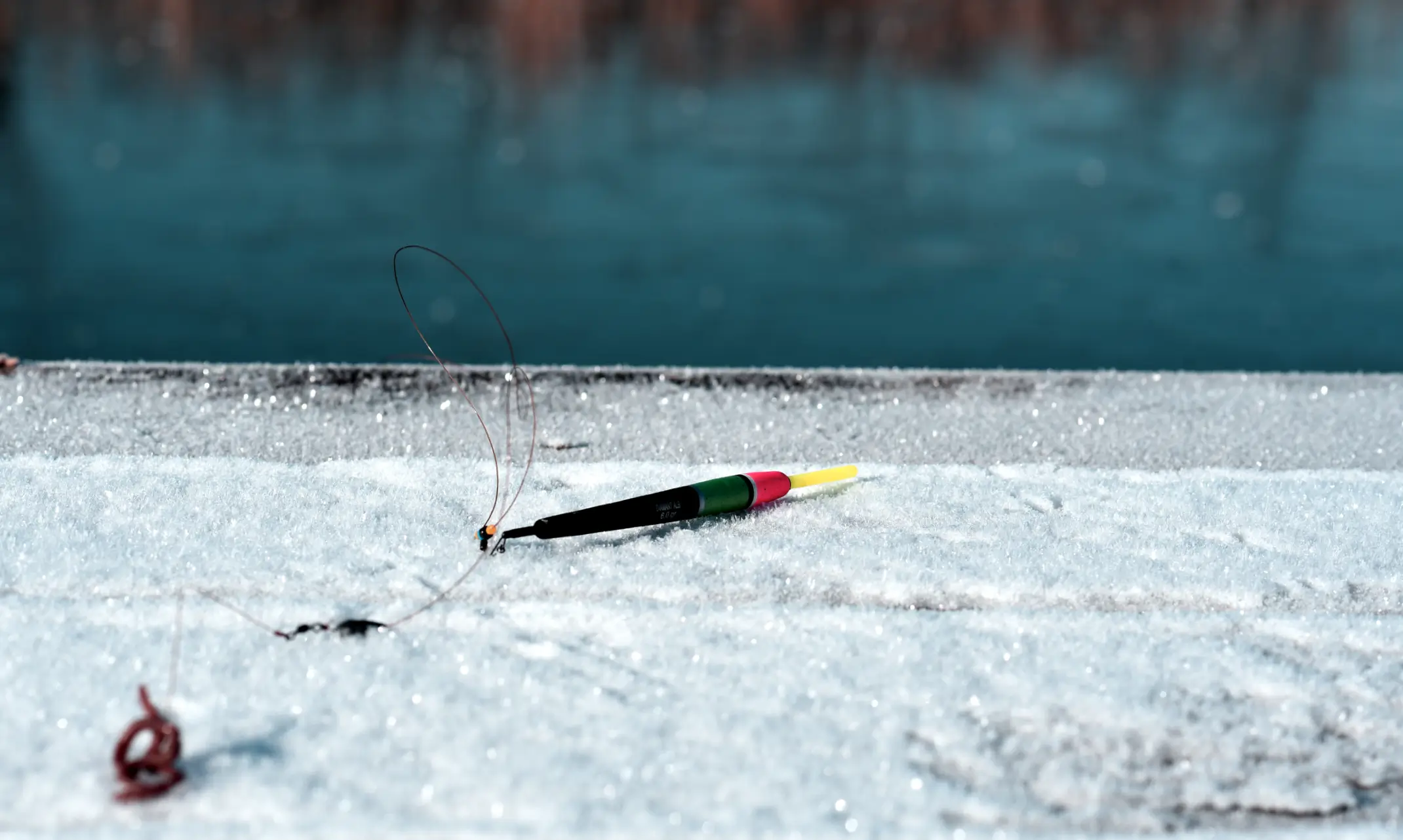Andrei Dumitrascu
Andrei Dumitrascu is the creative force behind our website. With a lifetime of experience on the water and an insatiable love for the culinary arts, he is not just a passionate angler but also a seasoned chef.
Pole fishing is one of the most commonly practiced methods of fishing. It brings a special touch to your time by the water and is the simplest and most beginner-friendly way to fish.

Welcome to pole fishing – a blend of old-school tradition and straightforward fun. It’s an age-old, easy-to-learn fishing style that has won over both new and seasoned anglers with its effectiveness and pure charm.
One of the standout features of pole fishing is its affordability. Unlike some other forms of fishing that require a significant investment in gear and gadgets, pole fishing keeps it simple. All you need is a long pole, a fishing line, a few basic accessories, and your favorite bait.
Whether you’re a seasoned angler looking to add a new skill to your repertoire or a novice eager to dip your toes into the world of fishing, pole fishing offers an accessible entry point.
If you’re new to the world of fishing and looking for the ideal starting point, look no further than pole fishing. This age-old technique is renowned for its beginner-friendly nature. Why? Because it strips away the complexities often associated with other forms of angling. This method is leaving you with a straightforward and highly rewarding experience.
With a basic setup and minimal accessories, beginners can quickly grasp the fundamentals.
Pole Fishing offers a an effective and simple way to catch fish. Here’s a brief guide to get you started:
A fishing pole is one of the easiest fishing tools, suitable for any age and level of experience.
There are various models and lengths available on the market, typically ranging from 3 to 10 meters, but the most commonly used ones are between 3 to 7 meters. They can also be made from different materials such as fiberglass, carbon fiber, kevlar, bamboo, reed, and their prices are directly proportional to their quality and weight. However, excellent results can be achieved with the more affordable options, or even with a longer stick from an elm or any other tree when in a natural setting and lacking access to proper equipment.
The choice of the pole should depend on the distance at which we intend to fish and the species we want to catch. In any case, a shorter and lighter pole is preferred over a very long and heavy one. For beginners, we recommend a 5 meters size.

Floats come in various sizes and shapes and can be crafted from almost any material.
Choosing the right float depends on the water current speed, the weight of the lead sinker, the size of the bait we choose to fish with, and the distance at which we want to fish.
It is crucial for the float to be perfectly balanced with the help of the sinker, ensuring that the fish feels minimal presence when it bites.
The fishing lines used must match the targeted fish species, as using a line that is too thick can delay bites, while a line that is too thin may result in losing the fish during the drill. Additionally, factors such as water turbidity and substrate composition should be considered. If there is a risk of the line being cut on the substrate, for example, in shells or snail shells, it is advisable to use a more abrasion-resistant line, such as fluorocarbon.
When it comes to hooks, the choice depends on both the bait we intend to use and the species we are targeting.

We recommend crafting the rig in such a way that we use the thinnest and finest floats, lines, and hooks tailored to the species we are targeting. This ensures that we can catch as many fish as possible.
If during the session, we notice that our rigs are breaking or the fish are larger than expected, we can always make adjustments, switching to stronger hooks or lines.
The line should be 25 cm shorter than the length of the fishing pole to facilitate the drill and make it easier to lift the fish out of the water. We also suggest mounting only a single hook, and the line connected to the hook should be thinner than the main line, these being combined with the help of a swivel.
This way, we can ensure that if a fish breaks the line, it will break the one connected to the hook, preventing the loss of the entire fishing rig. Additionally, this approach ensures the fish can escape unharmed, reducing the risk of getting entangled in the line.

For pole fishing, it is generally preferable to use natural baits such as earthworms, flesh maggots or dragonfly larvae. Additionally, it is highly practical to employ various seeds, such as canned sweet corn, boiled wheat, boiled or canned hemp seeds, bread, or different fruits that grow along the shoreline where we fish and are part of the fish’s seasonal diet.
It is crucial to chum the fishing area, using a larger quantity initially and then intermittently adding small amounts to keep the fish interested. A variety of groundbaits are readily available in any specialized store or online. If needed, ground-up cereals can be used, moistened with care to avoid being too wet or too dry. It is essential for them to reach the substrate where we intend to fish and work effectively in that area.
A small amount of live bait or various cereal seeds can be introduced into the groundbait to maintain the fish’s interest in our fishing spot.
Furthermore, we must consider the fish’s appetite, which is usually directly related to the outdoor temperature. Therefore, during winter months, it’s advisable to use very little groundbait, while in summer, a larger quantity should be employed.
Pole fishing is by far the simplest fishing method, providing unique sensations. Whether you’re a seasoned angler or a beginner, the tranquility of the water and the anticipation of each bite make it a truly rewarding experience.
As you immerse yourself in this leisurely activity, you’ll find that pole fishing not only offers a chance to catch various fish but also creates lasting memories of peaceful moments by the water’s edge. Tight lines and happy angling!
Remember to check local fishing regulations and obtain any necessary permits.
Pole fishing offers a more delicate and precise presentation of bait. Is an excellent choice for wary or smaller fish species. It allows for accurate casting to specific spots, minimizing disturbance in the water and increasing your chances of success.
Pole fishing provides a more direct and sensitive connection to the fish, enhancing the angler’s ability to detect subtle bites.
Select your pole length based on the size of the fish you intend to catch and the fishing location. Longer poles are suitable for larger waters and fish, while shorter poles are ideal for smaller venues and species.
While pole fishing is accessible to beginners, improving your skills in bait presentation and bite detection takes practice. Consider seeking guidance from experienced anglers to enhance your technique and knowledge.
By signing up you agree to receive fishing, foraging and cooking news. See Privacy Policy.